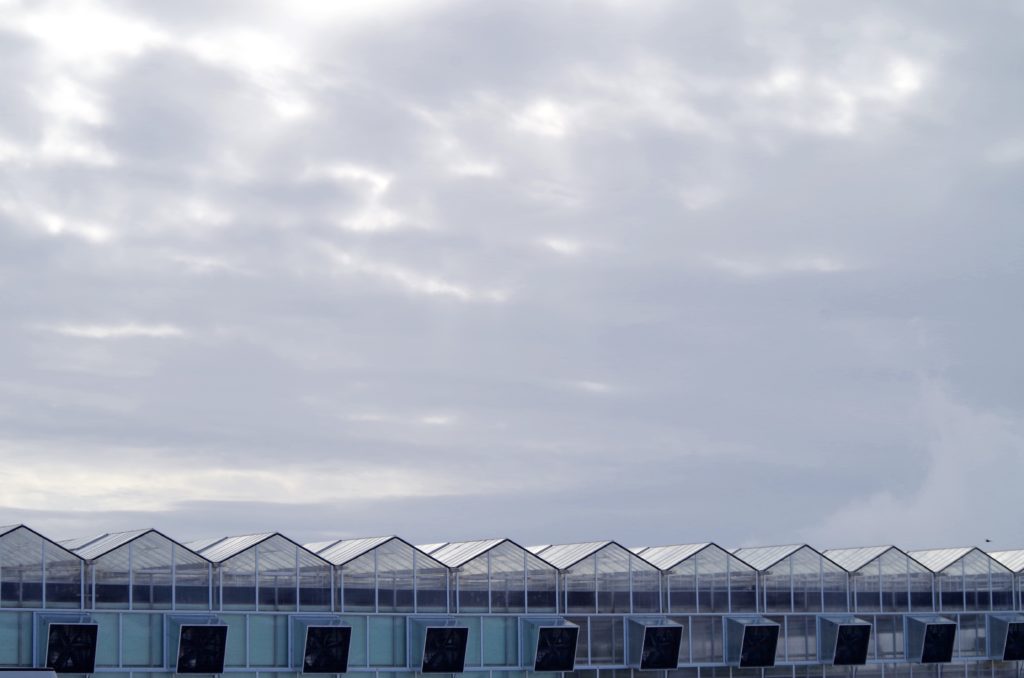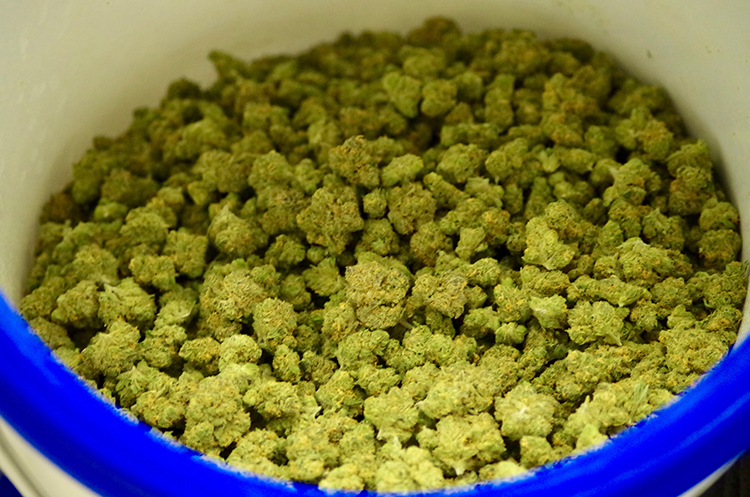It felt sci-fi. On a winter day where the white surrendered to the cold gloom and all that was left was the gray, it was no wonder. The inside of a greenhouse in the dead of winter can feel no other way. Climate-controlled 70+ degrees, moist air, and vibrant growth all around—we could have been terraforming Mars. But we were in Sunnyside. A hop, skip, and a jump through the gray, Shelley and I found ourselves at Double Dutch Farms watching marijuana grow.
We were greeted by Mike Van Wingerden, who along with his brother Matt make up the double of Double Dutch. For years the Van Wingerden family greenhouses have been providing garden plants and hanging flower baskets to folks everywhere. When cannabis was legalized in 2012, they saw a unique opportunity. With infrastructure in place, and horticulture in their blood, Double Dutch Farms was born in 2015 when they decided to devote a third of their three acres of greenhouse to growing marijuana.
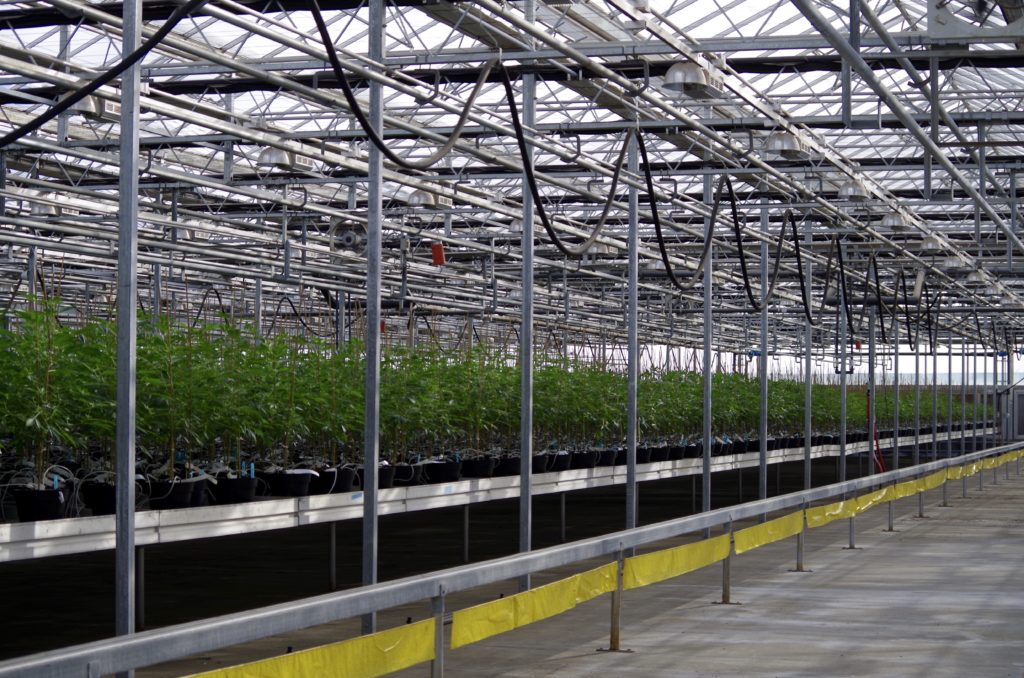 Mike walks us through. Fans, lights, and hoses all hang from the metal skeleton of the greenhouse. Plants on giant racks in tidy rows are everywhere. The smell is distinct. The glass ceiling makes for some serious brightness even under this dull sky, and as if to emphasize the point further, the gray day breaks momentarily to show a slice of blue sky overhead. It was really quite marvelous.
Mike walks us through. Fans, lights, and hoses all hang from the metal skeleton of the greenhouse. Plants on giant racks in tidy rows are everywhere. The smell is distinct. The glass ceiling makes for some serious brightness even under this dull sky, and as if to emphasize the point further, the gray day breaks momentarily to show a slice of blue sky overhead. It was really quite marvelous.
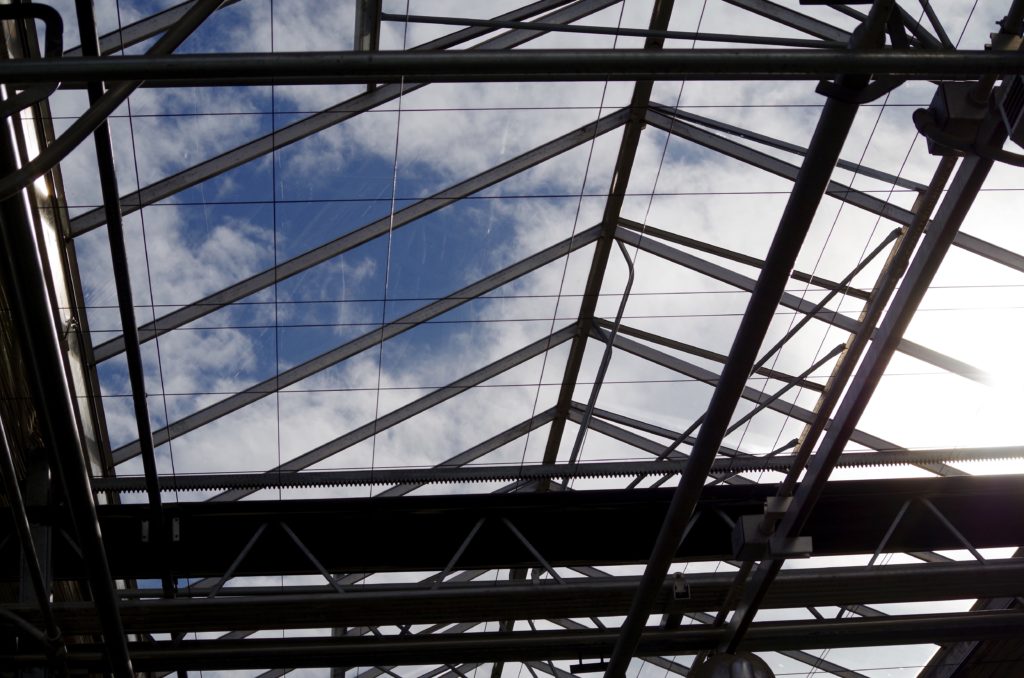 The beauty and bonus of greenhouse farming is that control over growth and development can be precise. Soil, irrigation, day length and weather can all be adjusted to what will benefit the plant most to put out the highest quality end product.
The beauty and bonus of greenhouse farming is that control over growth and development can be precise. Soil, irrigation, day length and weather can all be adjusted to what will benefit the plant most to put out the highest quality end product.
Here is the process in a nutshell: From a small grove of many different strains of mother plants, baby clones are made. 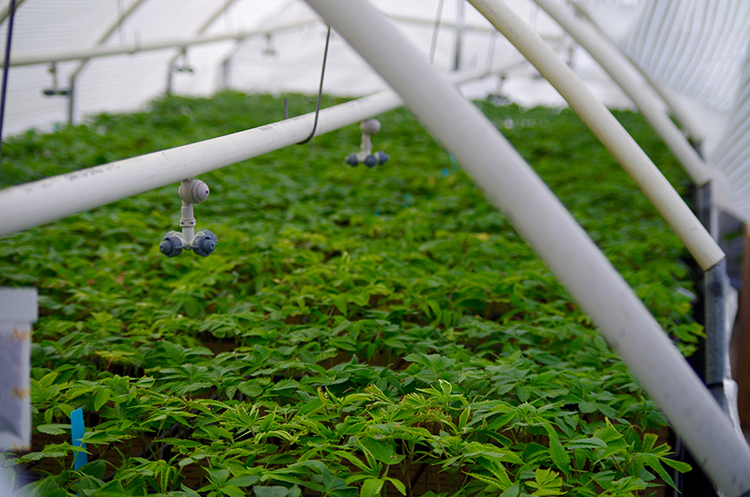 When the roots are established they are moved into pots and the focus is on growing the plant a bit larger. This is done by increasing the day length to 18 hours of light to encourage the plant’s vegetative state.
When the roots are established they are moved into pots and the focus is on growing the plant a bit larger. This is done by increasing the day length to 18 hours of light to encourage the plant’s vegetative state. 
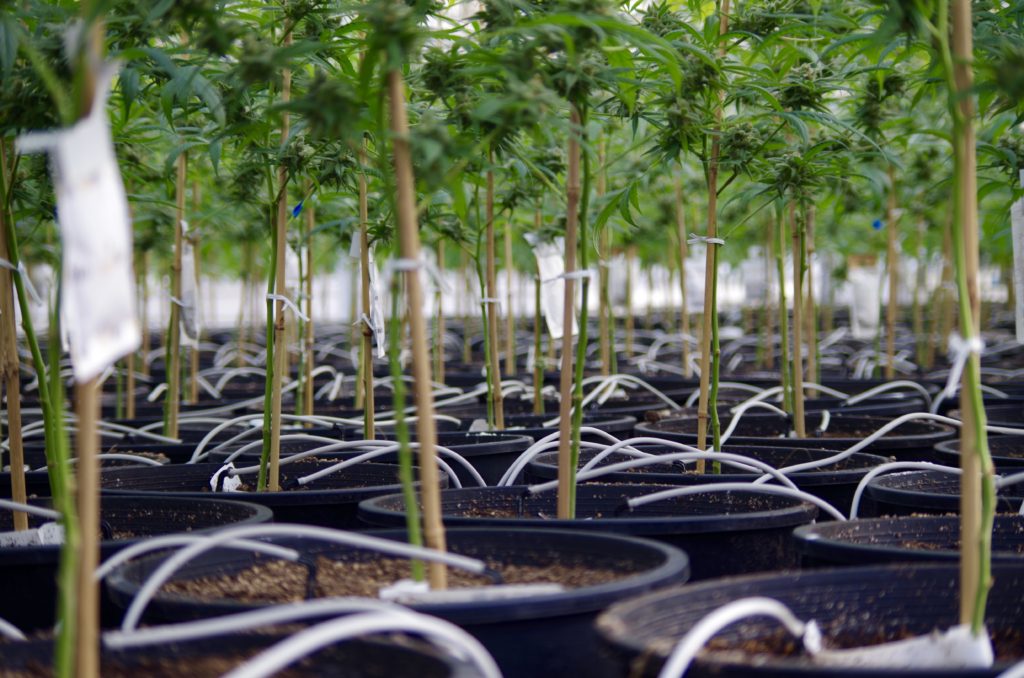 When the plants are large enough, they move into the next area and the light time is decreased to 12 hours a day to encourage flowering.
When the plants are large enough, they move into the next area and the light time is decreased to 12 hours a day to encourage flowering. 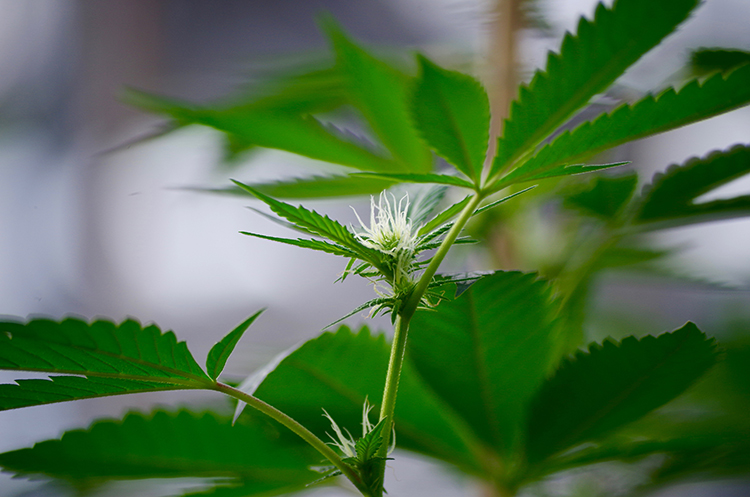 When the flower buds are just right, the plants are hung up to dry before having all the buds harvested. They package under their own label and sell at various locations around the state.
When the flower buds are just right, the plants are hung up to dry before having all the buds harvested. They package under their own label and sell at various locations around the state.
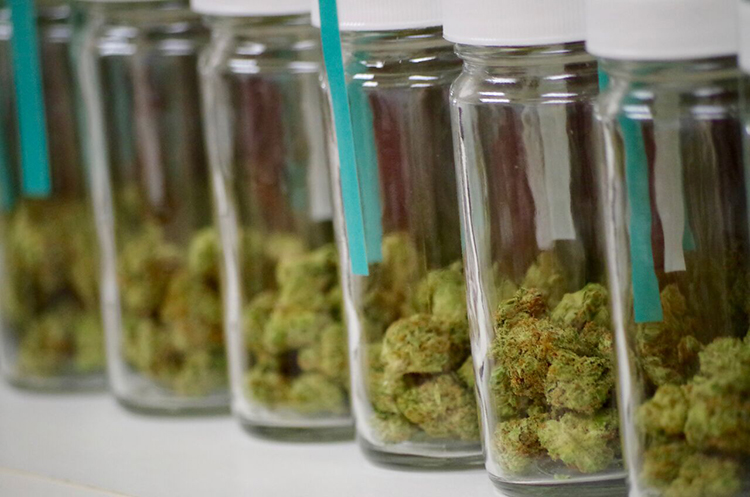 We had never before seen a greenhouse operation at this scale. Every space was meticulous, every detail thought of. The entire cycle from cloning to harvest is a well organized 16 weeks. By continually renewing the cycle, they are able to harvest every 2-3 weeks.
We had never before seen a greenhouse operation at this scale. Every space was meticulous, every detail thought of. The entire cycle from cloning to harvest is a well organized 16 weeks. By continually renewing the cycle, they are able to harvest every 2-3 weeks.
We walk away amazed. And while we weren’t terraforming a distant planet, it was a pretty remarkable thing to see in the middle of this seemingly endless winter.







